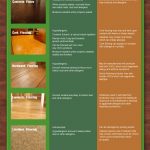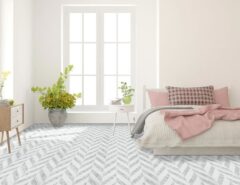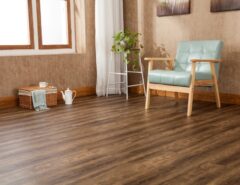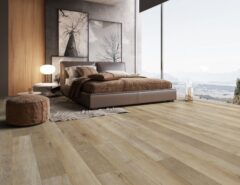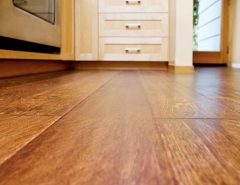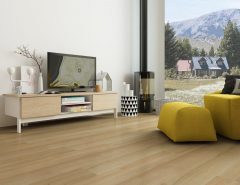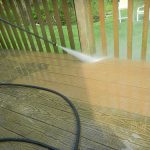
Revamping your home can be a lot of fun. Though when you’re in the thick of it, it’s a lot of work. But there’s something satisfying about walking into a room and seeing that new floor, especially when you know it’s there because of your efforts.
If you’re planning on replacing your floor with tile, you might wonder whether sandstone tile might be the right choice. No matter what floor you decide on, it’s best to know as much about it as possible. After all, the hope is that the floor will last a long time, so you want to know what you’re getting into. With that in mind, here’s everything you need to know about sandstone tile.
What Is Sandstone Tile?

Sandstone is a natural choice when it comes to flooring. Because it’s made of sandstone, it has shades that are similar to the beach and desert sand with colors that range from brown and tan to gold and red. Due to its durability, many homeowners choose this type of tile, especially in high-trafficked areas.
Best Places for Installing Sandstone
Though durable, sandstone is more porous than other natural stones such as granite. Sandstone is about the same as marble in terms of how much water it will absorb. Still, it’s a popular tile for both indoors and outdoors, adding warmth to the room or outdoor space. The best rooms for sandstone are living spaces, little-used bathrooms, kitchens, and hallways. That means sandstone can work pretty much wherever you need it. Further, Sandstone is a great wall tile choice for any room in your home.
The Pros and Cons of Sandstone Tile
Pros of Sandstone Tiles
There are many benefits to choosing sandstone for your flooring. Here are some of the top reasons:
- It’s beautiful. There’s something about natural stone that adds to the feeling of the indoors. Unlike manufactured flooring, stone has movement and uniqueness. Each stone is of its own making, and you won’t find any two tiles exactly alike.
- It’s durable. Because sandstone is resourced from a mountain, it’s safe to say that sandstone is as hard as a rock! Though it doesn’t have the same hardness levels as granite and slate, that can be a good thing. You don’t want to walk around on extremely hard materials all day, especially barefoot. It is durable, though and can last for decades if it’s cared for properly.
- It’s eco-friendly. If you’re worried about using environmentally friendly materials, sandstone checks that box. It is a product of the earth and biodegrades over time (though it takes a while), unlike vinyl and other materials that use plastic.
- Broken tiles are relatively easy to replace. Though sandstone tiles are durable, and therefore are less likely to crack or break, if one does, it’s easy to replace. Make sure that you keep some extra tiles just for that occasion.
Cons of Sandstone Tiles
With all the benefits, there are some cons you should keep in mind as you decide whether to go with sandstone tiles:
- It absorbs water. Unlike granite, sandstone is a relatively porous material. This means it’s more likely to stain, become damaged from mold, or absorb microbacteria. It’s even possible to warp. If you’re worried about this, use a sealant when you install the sandstone. This is especially beneficial in kitchens and bathrooms that will get water on it a lot. For bathrooms, you may need to seal it every three to six months. You can check with the manufacturer if you have any questions about whether you should seal the floor. It may depend on the specific product you choose.
- It can scratch. Because sandstone is a soft rock, as far as rocks go, it can scratch and dent over time from things such as claws, chairs, high heels, and objects dropping on the floor.
- It can be slippery when wet. How slippery it gets depends on the finish the floor has. Polished sandstone increases the chances of slipping when the floor is wet.
- It stains. With sandstone, you want to clean up any spills right away. This is especially true with deeply colored spills such as red wine, grape juice, and anything with food dyes. If you don’t clean it up right away, the stone can stain permanently. Some acidic cleaners can also cause staining because the stone is alkaline, and when the two mix, it causes a chemical reaction.
- It weathers and ages. Even if you take care of the floor just right, it will not look the same in 10 years as it does the first day it’s installed. This is due to the softness of the stone, causing it to change over time. Though some consider this a downside, others like the personality they get from the stone as it ages. Whether this is a pro or a con is completely dependent on your preferences.
- There are fewer color options. Just like with any natural material, the colors you are able to choose depends on the colors that are found in nature. This can be good and bad. On the one hand, you can find some wonderful variation that really adds beauty to the tiles. On the other hand, if you were hoping for a color outside the spectrum of sandstone, you’re out of luck.
- It can be hard on your body. If you have joint, back, or knee pain, you will want to invest in cushioned pads for the front of the sink and wherever else you stand for a while. Don’t hold this against Sandstone alone, though, as all stone and ceramic tile floors are hard on legs and feet because of how hard the materials are.
Stunning Sandstone Selection

Costs for sandstone tile generally range from $4 to $10 per square foot. Sandstone floors are really beautiful and add value to any home. You’ll definitely impress visitors when they walk in and see your gorgeous sandstone floors. If sandstone is something that interests you, be sure to check out the sandstone tiles that are available and choose one that has the color and variation that work for your home’s decor.
Resources:
https://blog.builddirect.com/the-modern-bathroom-stone-tile/
https://www.builddirect.com/Sandstone-Tile-Results





